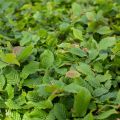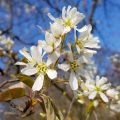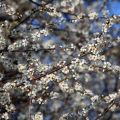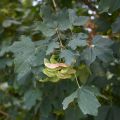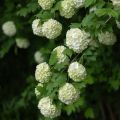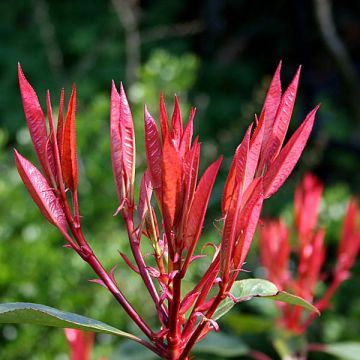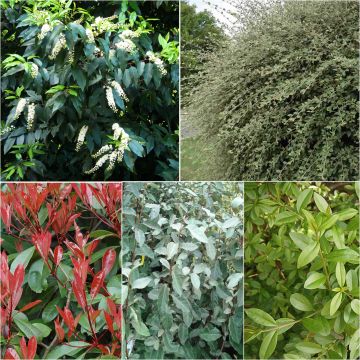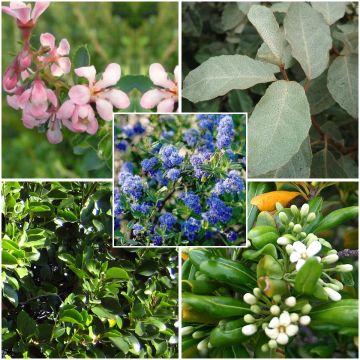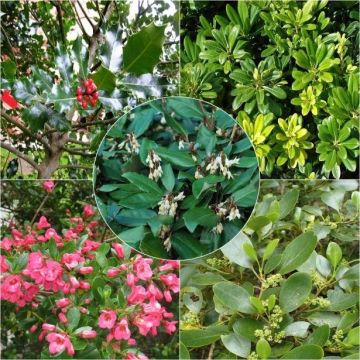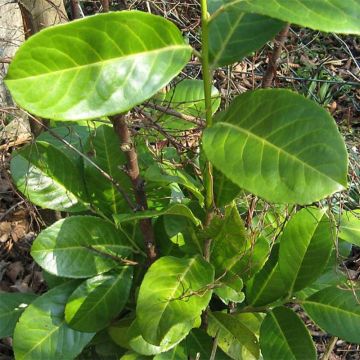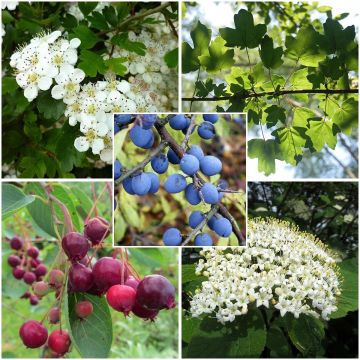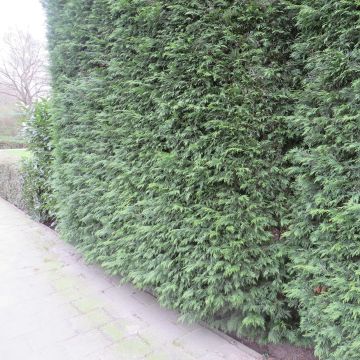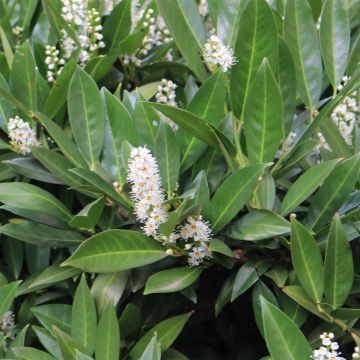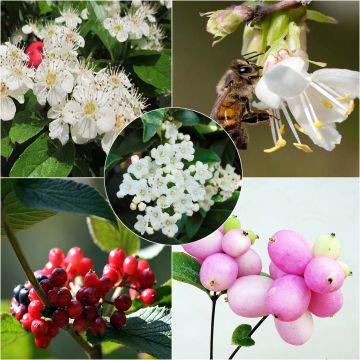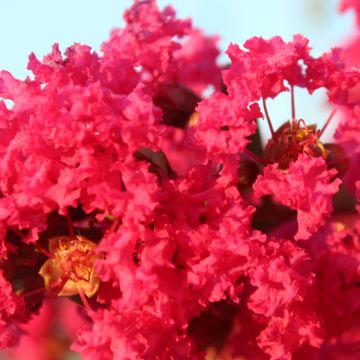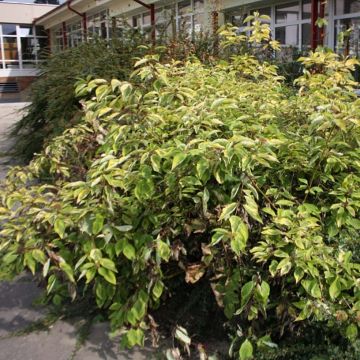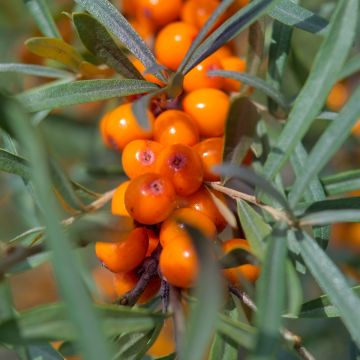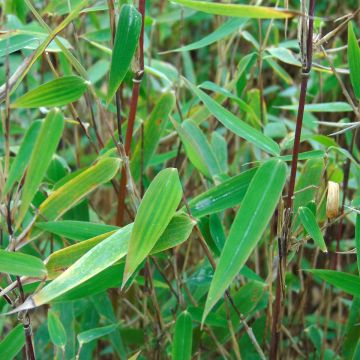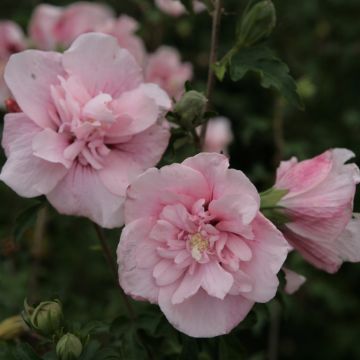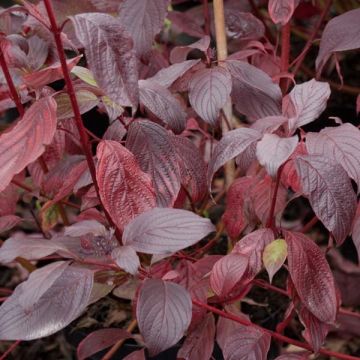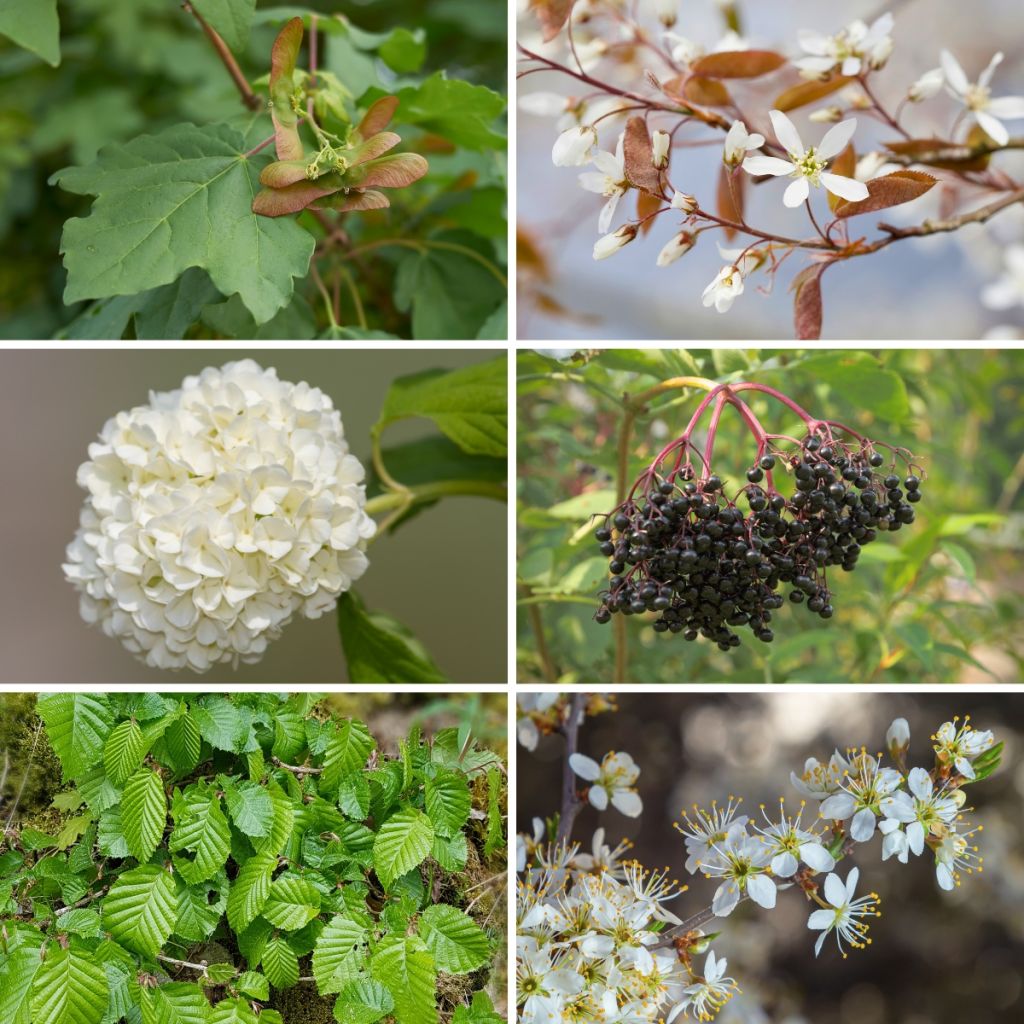

Wild Hedge Eco Kit 2
Wild Hedge Eco Kit 2
This plant carries a 24 months recovery warranty
More information
We guarantee the quality of our plants for a full growing cycle, and will replace at our expense any plant that fails to recover under normal climatic and planting conditions.
From €5.90 for pickup delivery and €6.90 for home delivery
Express home delivery from €8.90.
Does this plant fit my garden?
Set up your Plantfit profile →
Collection items (6 plants)
Description
The Rustic Hedge Eco Kit 2 is an economical solution to create a natural, colourful hedge that encourages biodiversity without exceeding your budget. This selection of shrubs is designed to attract birds and pollinators while requiring minimal maintenance. Comprising varieties such as the common hornbeam, serviceberry, and blackthorn, this hedge will enhance the garden almost all year round. A kit of 6 bare root plants to create approximately 5-6 m of rustic hedge.
The kit consists of:
1 x Common Hornbeam – Carpinus betulus: an elegant and dense bush with semi-evergreen foliage turning from light green to golden in autumn, reaching up to 4 m. It remains beautiful even in winter.
1 x Amelanchier lamarckii - Serviceberry: white, fragrant flowering in April-May, followed by small black berries that attract birds. Deciduous foliage turning orange-red in autumn, height: 3 to 4 m.
1 x Blackthorn - Prunus spinosa: a spiny bush with small white flowers early in March, providing nourishment for pollinators and offering black berries in autumn for local wildlife. Height: 3 m.
1 x Field Maple - Acer campestre: featuring deciduous green foliage turning yellow in autumn, this sturdy shrub tolerates pruning well and can reach up to 5 m.
1 x Snowball Tree - Viburnum opulus 'Roseum': a bush that produces white globular flowers in spring, ideal for cutting, and deciduous foliage turning red in autumn. Height: 3 m.
1 x Elderberry - Sambucus nigra: its white umbels appear in spring, followed by decorative purple berries in autumn. Deciduous foliage and rapid growth. Height: 3 to 4 m.
These shrubs are best planted in autumn for a stronger regrowth in spring. Choose a sunny to semi-shaded location and plant them in well-prepared and worked soil. For a balanced and natural hedge, space each bush 80 cm to 1 m apart, 1 to 2 bushes per linear metre for a dense hedge. A boundary hedge, planted 2 m from the property line, should not exceed 2 m in height.
Tip: Avoid pruning early in the season to fully enjoy the flowering! If possible, also refrain from pruning at the end of summer to benefit from the fruits and feed the garden birds in winter. Intervene only occasionally to limit the bush's clutter: preferably after flowering.
Report an error about the product description
Plant habit
Flowering
Foliage
Botanical data
Cultivar or hybrid
Other Hedge-growing kits A to Z
Planting and care
Plant this kit in the sun or partial shade, in well-prepared soil, enriched with leaf compost, moist but well-drained. Dig planting holes 30-40 cm in all directions, loosening the bottom and walls well with a fork or pickaxe. Maintain a planting distance of about 1 m between each bush. These easy-to-grow, undemanding bushes only require mulching in summer in dry climates to maintain some moisture, at least during the first summers following planting. Water them generously in the first years in case of marked drought (15-20 litres of water each time) but spaced out. You can prune the longest branches to help your bushes branch out. Avoid severe pruning that compromises flowering, unless a bush becomes too large.
Planting period
Intended location
Care
This item has not been reviewed yet - be the first to leave a review about it.
Hedge shrubs
Haven't found what you were looking for?
Hardiness is the lowest winter temperature a plant can endure without suffering serious damage or even dying. However, hardiness is affected by location (a sheltered area, such as a patio), protection (winter cover) and soil type (hardiness is improved by well-drained soil).

Photo Sharing Terms & Conditions
In order to encourage gardeners to interact and share their experiences, Promesse de fleurs offers various media enabling content to be uploaded onto its Site - in particular via the ‘Photo sharing’ module.
The User agrees to refrain from:
- Posting any content that is illegal, prejudicial, insulting, racist, inciteful to hatred, revisionist, contrary to public decency, that infringes on privacy or on the privacy rights of third parties, in particular the publicity rights of persons and goods, intellectual property rights, or the right to privacy.
- Submitting content on behalf of a third party;
- Impersonate the identity of a third party and/or publish any personal information about a third party;
In general, the User undertakes to refrain from any unethical behaviour.
All Content (in particular text, comments, files, images, photos, videos, creative works, etc.), which may be subject to property or intellectual property rights, image or other private rights, shall remain the property of the User, subject to the limited rights granted by the terms of the licence granted by Promesse de fleurs as stated below. Users are at liberty to publish or not to publish such Content on the Site, notably via the ‘Photo Sharing’ facility, and accept that this Content shall be made public and freely accessible, notably on the Internet.
Users further acknowledge, undertake to have ,and guarantee that they hold all necessary rights and permissions to publish such material on the Site, in particular with regard to the legislation in force pertaining to any privacy, property, intellectual property, image, or contractual rights, or rights of any other nature. By publishing such Content on the Site, Users acknowledge accepting full liability as publishers of the Content within the meaning of the law, and grant Promesse de fleurs, free of charge, an inclusive, worldwide licence for the said Content for the entire duration of its publication, including all reproduction, representation, up/downloading, displaying, performing, transmission, and storage rights.
Users also grant permission for their name to be linked to the Content and accept that this link may not always be made available.
By engaging in posting material, Users consent to their Content becoming automatically accessible on the Internet, in particular on other sites and/or blogs and/or web pages of the Promesse de fleurs site, including in particular social pages and the Promesse de fleurs catalogue.
Users may secure the removal of entrusted content free of charge by issuing a simple request via our contact form.
The flowering period indicated on our website applies to countries and regions located in USDA zone 8 (France, the United Kingdom, Ireland, the Netherlands, etc.)
It will vary according to where you live:
- In zones 9 to 10 (Italy, Spain, Greece, etc.), flowering will occur about 2 to 4 weeks earlier.
- In zones 6 to 7 (Germany, Poland, Slovenia, and lower mountainous regions), flowering will be delayed by 2 to 3 weeks.
- In zone 5 (Central Europe, Scandinavia), blooming will be delayed by 3 to 5 weeks.
In temperate climates, pruning of spring-flowering shrubs (forsythia, spireas, etc.) should be done just after flowering.
Pruning of summer-flowering shrubs (Indian Lilac, Perovskia, etc.) can be done in winter or spring.
In cold regions as well as with frost-sensitive plants, avoid pruning too early when severe frosts may still occur.
The planting period indicated on our website applies to countries and regions located in USDA zone 8 (France, United Kingdom, Ireland, Netherlands).
It will vary according to where you live:
- In Mediterranean zones (Marseille, Madrid, Milan, etc.), autumn and winter are the best planting periods.
- In continental zones (Strasbourg, Munich, Vienna, etc.), delay planting by 2 to 3 weeks in spring and bring it forward by 2 to 4 weeks in autumn.
- In mountainous regions (the Alps, Pyrenees, Carpathians, etc.), it is best to plant in late spring (May-June) or late summer (August-September).
The harvesting period indicated on our website applies to countries and regions in USDA zone 8 (France, England, Ireland, the Netherlands).
In colder areas (Scandinavia, Poland, Austria...) fruit and vegetable harvests are likely to be delayed by 3-4 weeks.
In warmer areas (Italy, Spain, Greece, etc.), harvesting will probably take place earlier, depending on weather conditions.
The sowing periods indicated on our website apply to countries and regions within USDA Zone 8 (France, UK, Ireland, Netherlands).
In colder areas (Scandinavia, Poland, Austria...), delay any outdoor sowing by 3-4 weeks, or sow under glass.
In warmer climes (Italy, Spain, Greece, etc.), bring outdoor sowing forward by a few weeks.

































